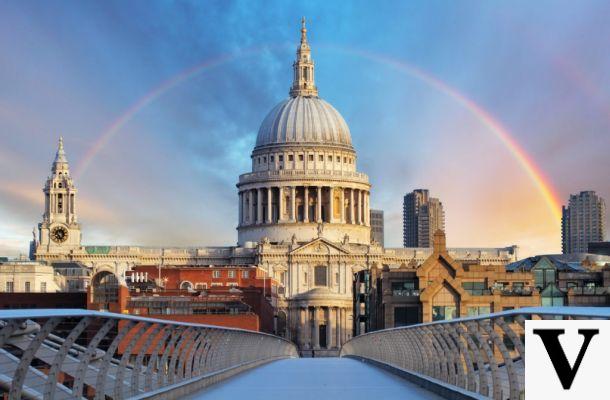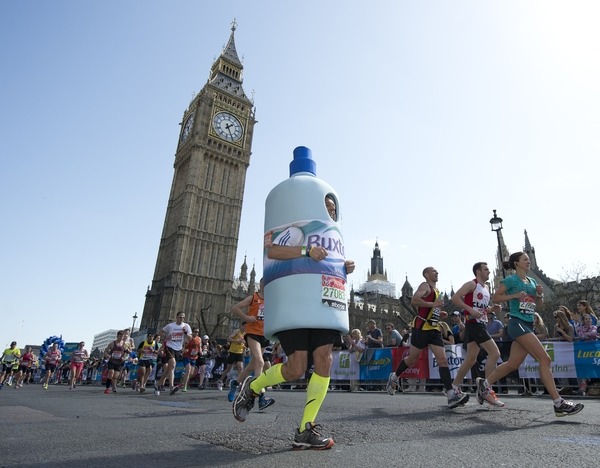Best time to travel to London
The best time to travel to England is undoubtedly between May and September, although the country has a mild climate all year round. But as is well known, it suffers from frequent cloud cover and some rain, especially in the winter period from November to March. In July and August you travel well, but you must be careful with the overcrowding of tourists.
Climate
The English climate is a temperate maritime climate, with mild winters and fairly hot summers. The precipitations fall during the whole year, but they are a bit more frequent during the winter. The west coast is rainier, while the east coast is windier and colder. The south coast is the sunniest and has the highest temperatures in the country.
In England, temperatures during the winter hardly drop below freezing, but remain stable between 2 and 8°C, while it is in late spring when they start to become pleasant, averaging around 15-17°C during the day. Spring nights can still be particularly cold, with temperatures hovering around 4-5 ° C, especially during windy days.
From June onwards, the weather becomes mild and temperatures rise to around 20°C during the day and 14°C at night. Precipitation, compared to winter, is reduced on average to about 10-12 days and 5-7 cm of rain per month. Summers in England are not very long and with the arrival of autumn the skies begin to cloud often. From November onwards the cold starts to set in and rainfall becomes more frequent, hardly abundant, but particularly heavy in the cold season.
Events and demonstrations
Among the most important English events we can point out the following.
One of them is the Notting Hill Carnival in London, with parades of floats and black people from the neighbourhood taking to the streets in masked costumes. The festival with its mainly Caribbean and multi-ethnic character is certainly of great impact. It is organized towards the end of August every year and has gained a lot of importance over time. The number of people taking part is growing and this has often put the security bodies in serious difficulties, risking being banned, but in recent years the cultural event has attracted the interest and support of public institutions, thus ensuring its existence. If you are in London at the end of August, don't miss the festival!
Another important English event is that of the Isle of Man, where every year during the first two weeks of June the Tourist Trophy (TT) is held, a motorcycle race attended by many motorcycle enthusiasts from all over Europe. The race has distant origins dating back to 1907, the year in which the track was created and still thrills many motorcyclists along its 60 km length. Many are tempted by the intoxication and risk of riding through these streets at full speed close to houses and walls. An event that is deeply felt by the locals.
In December - January
We're in the heart of winter and guess what? It's cold, of course, but not too cold. Temperatures fluctuate between 0 and 10°C, settling in at an average of 5-6°C. In short, despite false impressions, you can't say it's freezing (as long as it doesn't snow).
In this period, London dresses up for Christmas, celebrates New Year's Eve and comes alive for the January 1st parade: in short, perfect for lovers of fairytale settings and super events.
In February - March
The weather is obviously affected by the twists and turns of winter and, for this reason, temperatures are still a little low. On the other hand, the city is relatively uncrowded and can be better appreciated: if you hate crowds, queues and confusion, this is your ideal time. Among the events, mark Chinese New Year in SoHo between late January and early February.
April - May
It's finally spring, but be careful not to forget your umbrella at home! In these months, more than ever, thunderstorms are frequent and don't let four drops ruin your holiday (actually, most of the time it's just drizzle, drizzle, drizzle, as they call it here): a good k-way in the bag will suffice to make the best of the fickleness of London's crazy weather.
June, July and August
If you hate the local heatwave, plan a trip to London in summer: temperatures are much more bearable than the Italian ones (on average around 20 degrees), but don't be caught by surprise when you leave the house with a sweatshirt. and ... an umbrella!
Going to London in September, October, November
If in September the days are still hot and sunny, in October and November they become grey, wet and rainy: in short, for those who want to savour the authenticity of the proverbial London weather this is an excellent period.





























